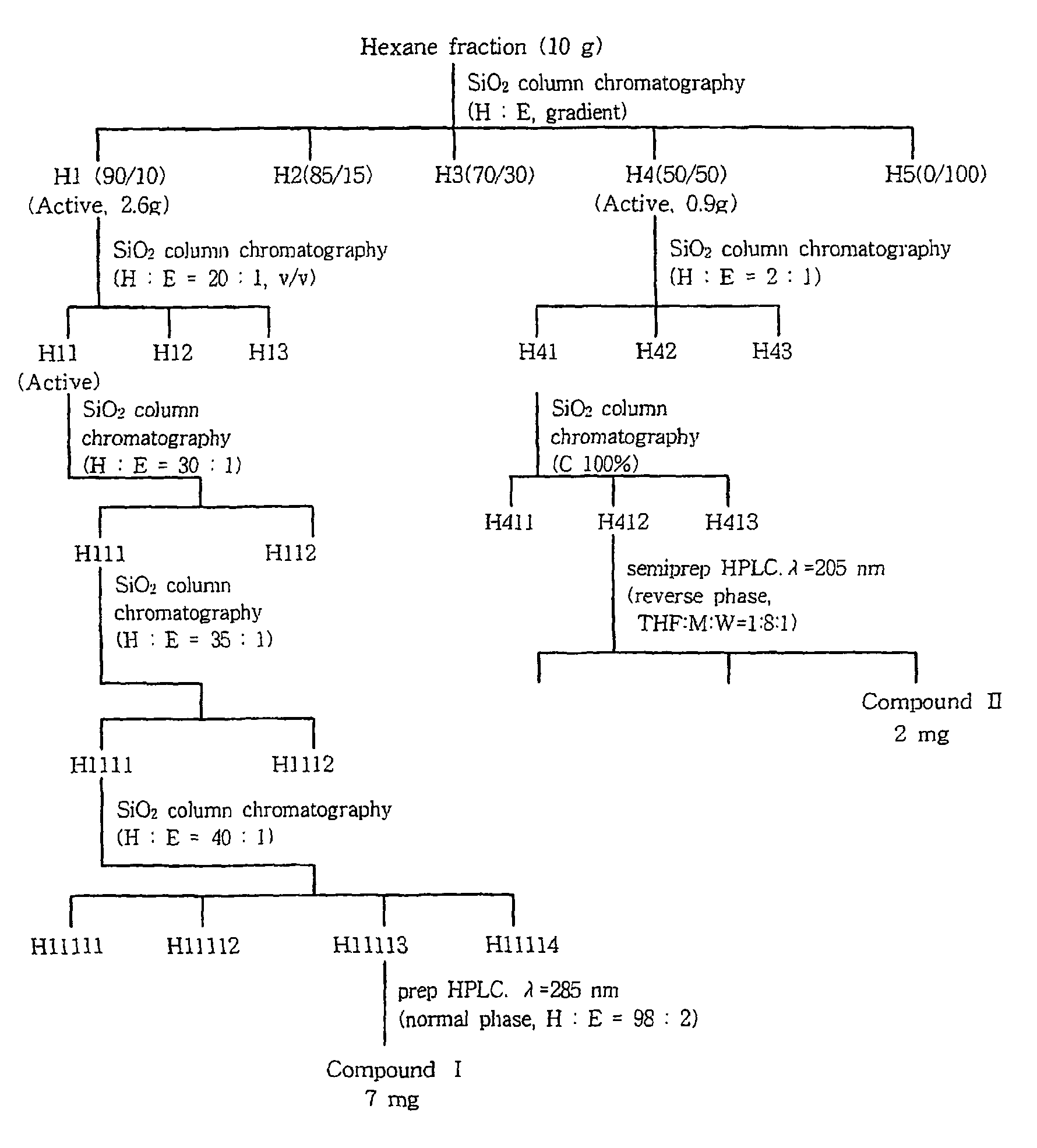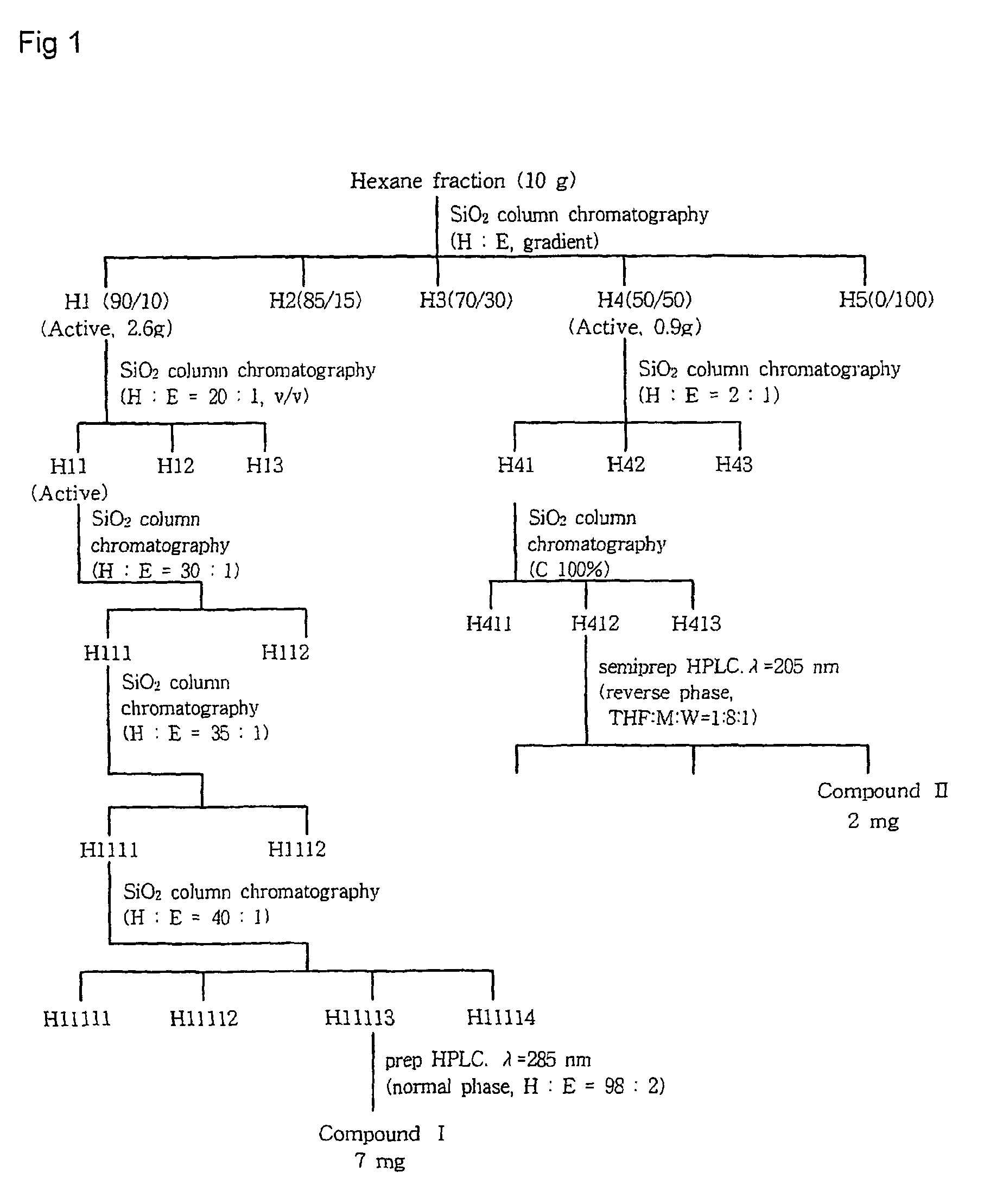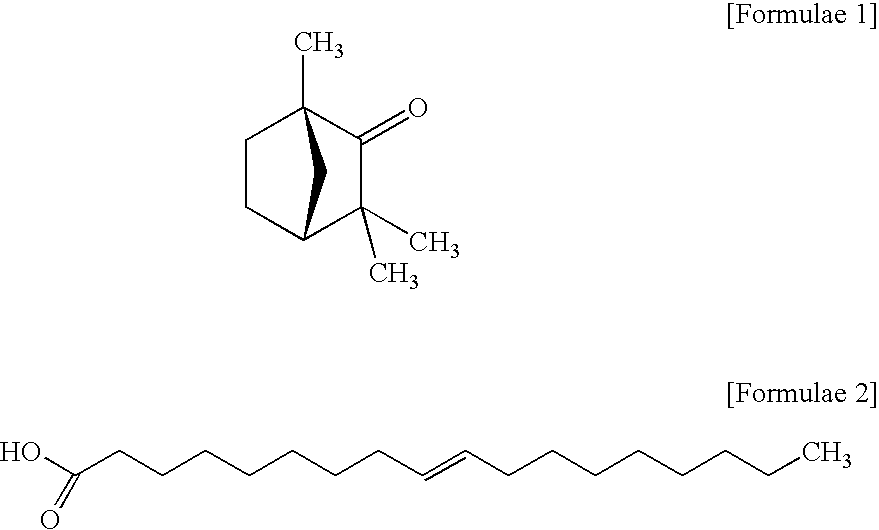Mosquito repellent isolated from Foeniculum vulgare fruit
a technology of foeniculum vulgare and insect repellent, which is applied in the directions of biocide, plant/algae/fungi/lichens, drug compositions, etc., can solve the problems of harmful side effects, use of synthetic organic insecticides, and a lot of human deaths
- Summary
- Abstract
- Description
- Claims
- Application Information
AI Technical Summary
Benefits of technology
Problems solved by technology
Method used
Image
Examples
example 1
Preparation of Sample and Analyzing of Active Compounds
[0038]13 kg of F. vulgare fruit, purchased as a commercially available product, were dried for 3 days at 60 C.° in an oven. The sample was finely powdered using a blender, and it was then extracted twice with 100 L of methanol at room temperature for 2 days. The extract was filtered with Toyo filter paper No2 (Japan) and concentrated in vacuo at 35 C.° to obtain a 6% yield of methanol extract from the F. vulgare fruits, after filtering. The yield of methanol extract was calculated by weight of the ground F. vulgare fruits to that of methanol extract. 780 g of methanol extract were sequentially partitioned by polarity and density of organic solvents and then 20 g of methanol extract were partitioned into n-hexane (18.6 g), chloroform (0.8 g), ethyl acetate (0.1 g), and a water-soluble portion (0.5 g)
example 2
[0049]The active compounds of the hexane portion (720 g) that present strong repellent activity were isolated.
[0050]FIG. 1 shows the procedure that isolates the active compound of the hexane portion.
[0051]The Primary Chromatography
[0052]The hexane portion (187 g) was chromatographed on a silica gel column (Berck 70–230 mesh, 600 g, 5.5 i.d.×70 cm), and successively eluted with a stepwise gradient of hexane-ethyl acetate. The ratios of hexane to ethyl acetate used in the stepwise gradient were 90:10, 85:15, 73:30, 50:50, and 0:100, and fractions of each ratio were collected as H1, H2, H3, H4 and H5 respectively. The five fractions were tested as to their mosquito repellency by the patch test of Test 1, and as a result, the two fractions, H1 (187 g) and H4 (57 g) that have repellent activity were isolated.
[0053]The Second Chromatography
[0054]The active fractions isolated from the first silica gel chromatography were chromatographed.
[0055]Firstly, the H1 fraction was eluted with hexane...
example 3
Identification of the Active Compounds
[0069]Structural determination of the active fractions isolated from Example 2 was made by spectral analysis. 1H- and 13C-NMR spectra were recorded with a JNM-LA 400F7 spectrometer (TMS as an internal standard), and chemical shifts were given in ppm. The electron impact (EI) UV spectra were obtained on a UV spectrometer (Kontron Instrument UVIKON 922) and mass spectra were obtained on a JEOL GSX 400 spectrometer. The two active compounds isolated from Example 2 were characterized as fenchone and E-9-octadecenoic acid as in the following Formulae 1 and 2.
[0070]
PUM
| Property | Measurement | Unit |
|---|---|---|
| relative humidity | aaaaa | aaaaa |
| diameter | aaaaa | aaaaa |
| flow rate | aaaaa | aaaaa |
Abstract
Description
Claims
Application Information
 Login to View More
Login to View More - R&D
- Intellectual Property
- Life Sciences
- Materials
- Tech Scout
- Unparalleled Data Quality
- Higher Quality Content
- 60% Fewer Hallucinations
Browse by: Latest US Patents, China's latest patents, Technical Efficacy Thesaurus, Application Domain, Technology Topic, Popular Technical Reports.
© 2025 PatSnap. All rights reserved.Legal|Privacy policy|Modern Slavery Act Transparency Statement|Sitemap|About US| Contact US: help@patsnap.com



